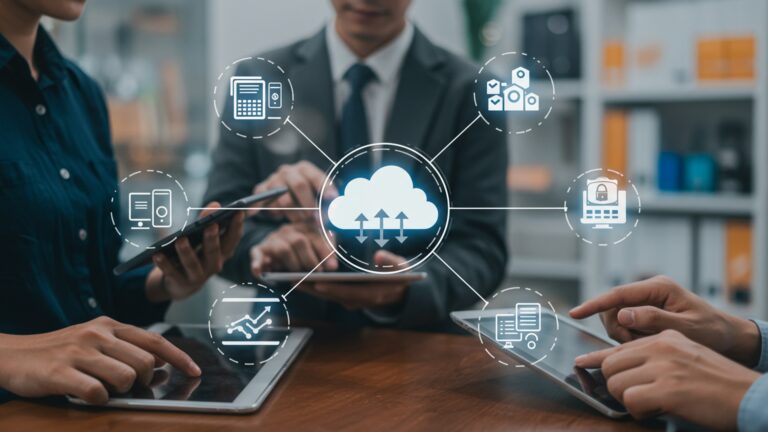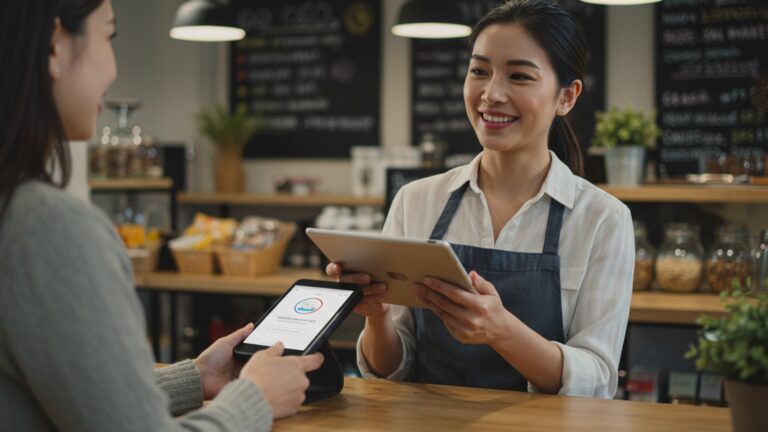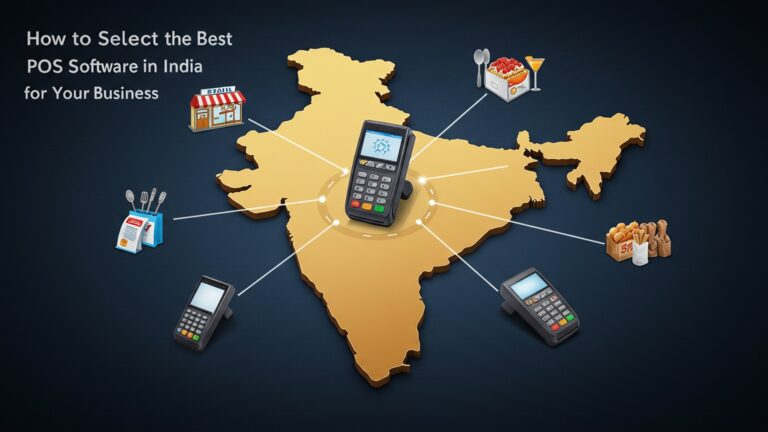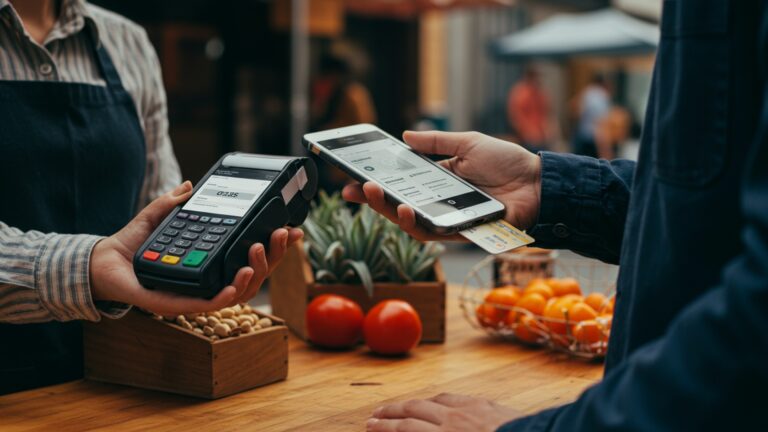A Practical Guide How to Optimize POS Software for Grocery Stores
In today’s fiercely competitive retail landscape, the effectiveness of your pos software for grocery store transcends mere transaction processing; it dictates operational efficiency and customer satisfaction. Modern systems offer robust capabilities far beyond basic checkout, enabling real-time inventory synchronization, dynamic pricing adjustments. AI-driven predictive ordering to minimize waste, particularly for perishables. Leveraging recent developments like integrated contactless payment solutions and cloud-based platforms transforms the point-of-sale into a strategic hub for data analytics, powering personalized loyalty programs and optimizing staff allocation. Unlocking the full potential of this critical technology empowers grocers to streamline workflows, enhance the shopping experience. secure a significant competitive advantage in a rapidly evolving market.
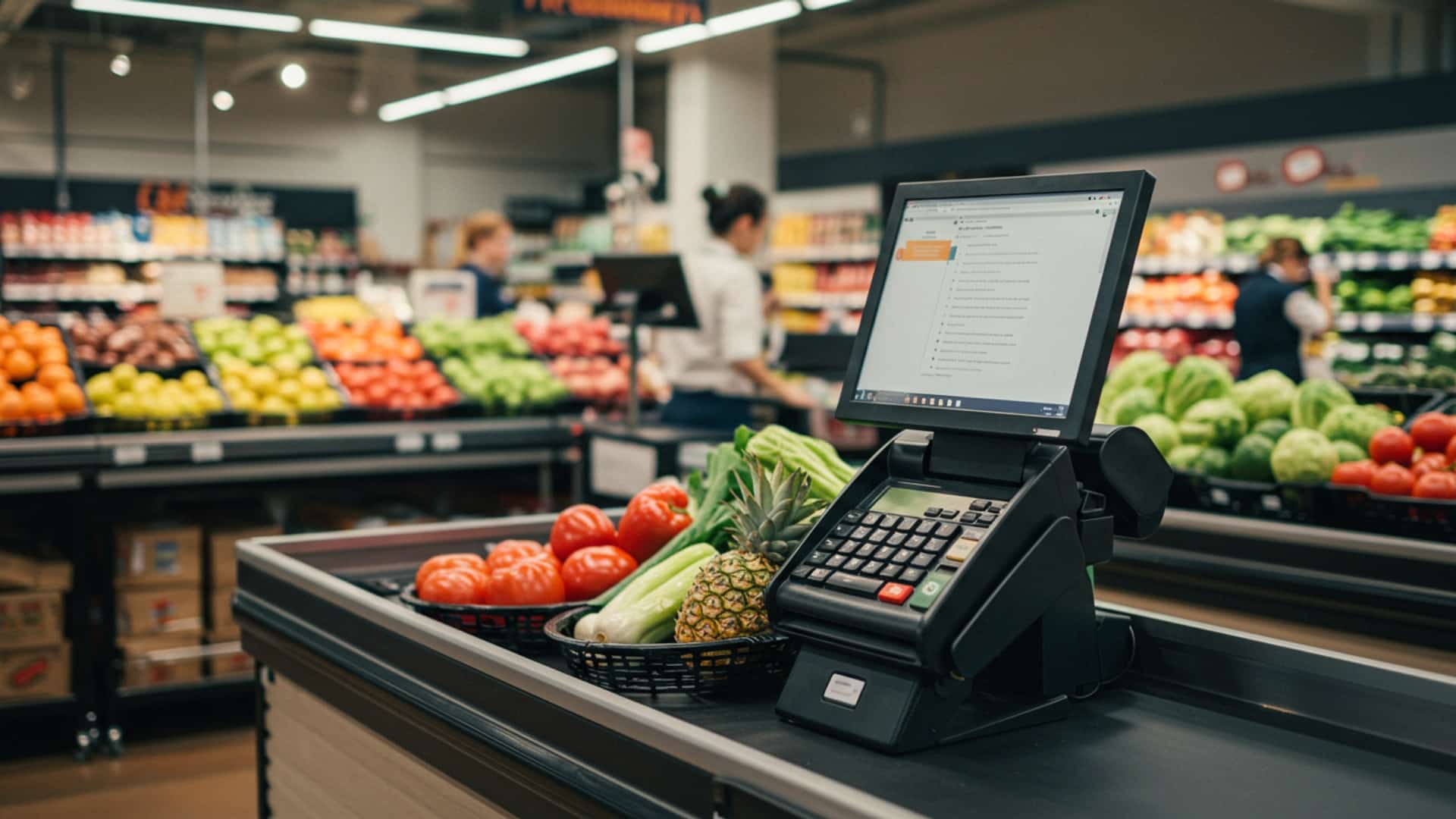
Understanding the Crucial Role of POS Software in Grocery Operations
In the competitive landscape of modern retail, particularly for grocery stores, Point of Sale (POS) software is far more than just a cash register. It’s the central nervous system that orchestrates everything from customer transactions to inventory management and data analytics. For a grocery store, an optimized pos software for grocery store system can be the key differentiator, enhancing operational efficiency, improving customer satisfaction. ultimately boosting profitability. Before diving into optimization, it’s crucial to grasp what a POS system encompasses in this context and why its performance directly impacts your bottom line.
- Transaction Processing
- Inventory Management
- Customer Management
- Reporting and Analytics
- Employee Management
At its core, the POS handles sales, returns. exchanges, accurately calculating totals, taxes. applying discounts.
It tracks stock levels in real-time, manages product variants (e. g. , organic vs. conventional produce). alerts staff to low stock, critical for fresh produce and high-turnover items.
From loyalty programs to tracking purchase history, a robust POS helps grocery stores grasp and serve their customers better.
It collects vast amounts of data on sales trends, employee performance. product popularity, providing actionable insights for strategic decision-making.
Many systems offer time clock functionalities, sales performance tracking. role-based permissions.
The primary goal of optimizing your pos software for grocery store is to ensure seamless operations, reduce bottlenecks. leverage data for strategic growth. A poorly optimized system can lead to long checkout lines, inaccurate inventory, missed sales opportunities. frustrated staff and customers alike.
Streamlining Checkout Processes for Enhanced Customer Experience
The checkout line is often the final and most critical interaction a customer has with your grocery store. Any friction here can severely impact their overall experience and likelihood of returning. Optimizing your POS software for grocery store checkout efficiency is paramount.
- Rapid Barcode Scanning
- Intuitive User Interface (UI)
- Flexible Payment Processing
- Self-Checkout Integration
Ensure your POS system and hardware (scanners) are capable of lightning-fast, accurate barcode reading. This includes handling damaged barcodes or those on awkwardly shaped items. Regular cleaning and maintenance of scanners are simple yet effective steps.
The POS interface for cashiers should be exceptionally user-friendly, minimizing clicks and simplifying common tasks like applying discounts, voiding items, or searching for unbarcoded produce. A well-designed UI reduces training time and error rates.
Modern customers expect diverse payment options. Your pos software for grocery store must seamlessly integrate with various payment gateways, supporting contactless payments (NFC), mobile wallets (Apple Pay, Google Pay), EMV chip cards. traditional swipe methods. Ensure your payment terminals are up-to-date and PCI DSS compliant.
For many grocery stores, self-checkout kiosks are no longer a luxury but a necessity, especially during peak hours. Optimizing self-checkout involves ensuring the software is stable, easy for customers to navigate. efficiently handles common issues like produce lookups or age-restricted items, often with remote assistance capabilities for staff.
Comparison: Staffed Checkout vs. Self-Checkout Optimization
| Feature | Staffed Checkout Optimization | Self-Checkout Optimization |
|---|---|---|
| Focus | Cashier efficiency, speed, customer interaction. | Customer autonomy, error reduction, supervision. |
| Key Optimizations | Intuitive UI, quick item lookup, macro buttons for common actions, integrated scales. | Clear on-screen instructions, robust produce lookup, weight validation, efficient error handling. |
| Benefits | Personalized service, complex transaction handling, reduced human error with proper training. | Reduced wait times, customer convenience, labor cost savings (partially). |
| Challenges | Staff training, potential for human error, speed dependent on cashier. | Customer frustration with technical issues, theft prevention, age verification. |
A real-world example: A regional grocery chain, ‘FreshMart,’ implemented a new pos software for grocery store that allowed cashiers to customize their screen layouts with frequently sold items and common discounts. They reported a 12% increase in transaction speed during peak hours and a noticeable reduction in staff training time, directly impacting customer satisfaction scores.
Leveraging Advanced Inventory Management Capabilities
For a grocery store, inventory is perishable and high-volume, making precise management critical. Your pos software for grocery store should be the backbone of this operation, moving beyond simple stock counts to predictive analytics and automation.
- Real-time Inventory Tracking
- Automated Reordering
- Perishable Goods Management
- Waste and Shrinkage Reduction
Ensure every sale, return. delivery updates stock levels instantly. This prevents overselling and helps maintain optimal stock of high-demand items like fresh produce, dairy. meat. Integration with handheld scanners for receiving and shelf audits is crucial.
Configure your POS to automatically generate purchase orders when stock levels hit predefined thresholds. This reduces manual effort, minimizes stockouts. prevents overstocking, especially for items with short shelf lives.
Your POS should support tracking by lot number, expiration date. even first-in, first-out (FIFO) or last-in, first-out (LIFO) inventory methods. This is vital for reducing waste and ensuring product freshness.
Utilize POS data to identify patterns in spoilage, theft, or damaged goods. Detailed reporting can pinpoint specific products, times, or even departments where shrinkage is highest, allowing for targeted interventions.
Practical Application: Setting Reorder Points
Many advanced POS systems allow you to configure reorder points based on sales velocity and lead times. Here’s a conceptual example of how you might set this up:
// For a specific product, e. g. , 'Organic Milk (1 Gallon)'
Product ID: GM001
Current Stock: 15 units
Average Daily Sales: 5 units
Supplier Lead Time: 2 days // Calculation for Reorder Point (Safety Stock + (Daily Sales Lead Time))
Safety Stock: 5 units (to cover unexpected demand)
Reorder Point: 5 + (5 2) = 15 units // When Current Stock <= Reorder Point, trigger a purchase order for X units.
By leveraging these features, grocery stores can significantly reduce carrying costs, minimize waste from expired products. ensure shelves are always stocked with what customers want. A grocery store in California, “GreenGrocer,” implemented automated reordering for their produce department via their new pos software for grocery store. They observed a 20% reduction in spoilage and a 10% increase in fresh produce availability, leading to higher customer satisfaction.
Optimizing Data Analytics and Reporting for Strategic Growth
The data generated by your pos software for grocery store is a goldmine for strategic decision-making. Optimizing how you collect, examine. act on this data can unlock significant growth opportunities.
- Comprehensive Sales Reporting
- Customer Purchase Patterns
- Vendor Performance Analysis
- Loss Prevention Insights
Go beyond total sales. assess sales by department, category, individual product, time of day, day of week. even by employee. This helps identify peak hours for staffing, best-selling items for promotions. underperforming categories that need attention.
Integrate your POS with customer loyalty programs to track individual or segmented customer purchase histories. This data allows for personalized marketing, targeted promotions. understanding demographic preferences.
Track sales and profitability by vendor. This allows you to negotiate better terms, identify reliable suppliers. discontinue products from underperforming vendors.
Detailed transaction logs, void reports. refund data can highlight suspicious activities, helping to identify and mitigate internal theft or fraud.
Actionable Takeaway: Utilizing Sales Data for Merchandising
Imagine your POS data reveals that organic gluten-free pasta sales surge every Tuesday afternoon, coinciding with a local farmers market. You can then:
- Increase stock of these items specifically before Tuesday.
- Create a special display for related organic or gluten-free products near the pasta aisle on Tuesdays.
- Run a targeted promotion via your loyalty program to customers who previously bought similar items.
This level of data-driven merchandising, facilitated by an optimized pos software for grocery store, ensures that your product offerings and store layout are always aligned with customer demand, maximizing sales potential.
Enhancing Customer Loyalty and Personalization
In the competitive grocery market, fostering customer loyalty is paramount. Your pos software for grocery store can be a powerful tool for building lasting relationships and offering personalized experiences.
- Integrated Loyalty Programs
- Personalized Promotions at Checkout
- Digital Receipts and Feedback
- Omnichannel Integration
A seamlessly integrated loyalty program allows customers to earn and redeem points, discounts, or special offers directly at the checkout. The POS should handle member lookups, point tracking. reward application effortlessly.
Based on a customer’s purchase history (captured by the loyalty program via the POS), your system can prompt cashiers (or self-checkout screens) to suggest relevant upsells or cross-sells. For example, if a customer buys coffee, the system might suggest a discount on coffee filters.
Offer customers the option for digital receipts via email or SMS. This not only saves paper but also provides an opportunity to collect post-purchase feedback or include personalized offers for their next visit.
For grocery stores offering online ordering, click-and-collect, or home delivery, your POS must integrate seamlessly with these platforms. A customer’s online shopping cart should reflect their loyalty points and available offers. their in-store purchases should contribute to their online profile, creating a unified customer journey.
Case Study: Loyalty Program Success
A mid-sized grocery store chain, ‘Community Foods,’ revamped their loyalty program, integrating it deeply with their new pos software for grocery store. They started offering personalized discounts based on past purchases rather than generic coupons. Within six months, they saw a 15% increase in repeat customer visits and a 10% uplift in average transaction value among loyalty members, demonstrating the power of data-driven personalization.
Ensuring Security, Scalability. Future-Proofing
Optimizing your pos software for grocery store isn’t just about current performance; it’s also about safeguarding your business and preparing for future growth. Security and scalability are non-negotiable.
- Data Security and Compliance
- Regular Backups
- Scalability
- API and Third-Party Integrations
Your POS handles sensitive customer payment insights and critical business data. Ensure your system is PCI DSS (Payment Card Industry Data Security Standard) compliant, utilizes robust encryption for data in transit and at rest. has strong access controls. Regular security audits and software updates are vital.
Implement automated, regular data backups to a secure offsite location. This protects your sales history, inventory data. customer insights from potential data loss due to hardware failure, cyber-attack, or natural disaster.
As your grocery store grows, or if you plan to open new locations, your POS system must be able to scale effortlessly. This means supporting more terminals, increased transaction volumes. additional inventory items without performance degradation.
A truly optimized POS offers open APIs (Application Programming Interfaces) that allow it to connect with other essential business tools. This could include accounting software (e. g. , QuickBooks, Xero), e-commerce platforms, deli scales, label printers. workforce management systems. These integrations eliminate manual data entry and create a more cohesive operational ecosystem.
Comparison: Cloud-Based vs. On-Premise POS for Grocery Stores
| Feature | Cloud-Based POS | On-Premise POS |
|---|---|---|
| Hosting | Data and software hosted on vendor’s servers. | Data and software hosted on your local servers. |
| Cost Model | Subscription (SaaS) model, lower upfront cost. | Higher upfront cost (hardware, software license), ongoing maintenance. |
| Accessibility | Access from anywhere with internet, real-time data. | Limited to local network, remote access can be complex. |
| Updates/Maintenance | Vendor handles updates, security patches automatically. | Your IT staff or third-party handles updates and maintenance. |
| Scalability | Easier to scale up/down, add new locations. | Requires hardware upgrades, more complex scaling. |
| Security | Vendor responsible for server security, often robust. | Your responsibility, requires dedicated IT resources. |
| Offline Capability | Many offer offline mode, syncing when reconnected. | Typically fully functional offline. |
For most modern grocery stores, a cloud-based pos software for grocery store offers greater flexibility, lower total cost of ownership over time. better scalability. But, understanding the nuances of each model is key to making an informed decision that aligns with your specific operational needs and IT capabilities.
Conclusion
Optimizing your grocery store’s POS isn’t merely a technical tweak; it’s a strategic imperative that directly impacts your bottom line and customer loyalty. To truly harness its power, begin by auditing your current setup, focusing specifically on bottlenecks during peak times—like the Saturday rush when every second counts at the checkout. My personal tip? Regularly review your inventory management features; I’ve seen firsthand how leveraging real-time stock data, especially for perishable items like fresh produce, drastically reduces waste and prevents frustrating stock-outs, keeping customers happy and margins healthy. Embrace current trends by ensuring your system supports seamless contactless payments and integrates with emerging loyalty programs, a non-negotiable for today’s tech-savvy shopper. This proactive approach transforms your POS from a basic transaction tool into a powerful, data-driven engine. Take these actionable steps, from staff training to exploring new feature rollouts. watch your grocery store thrive in a competitive market. The future of retail belongs to those who continuously refine their digital core, making every customer interaction smoother and more efficient. For further insights into retail technology, explore resources like the National Retail Federation’s tech insights.
More Articles
How to Choose the Best Android POS Software for Your Business
Discover How POS Billing Software Transforms Your Business Operations
How to Easily Set Up and Use Mobile POS Software for Seamless Sales
Learn How to Choose the Right POS Software for Efficient Retail Operations
FAQs
Why should a grocery store even think about optimizing its POS software?
Optimizing your POS isn’t just about faster checkouts anymore. It’s about boosting efficiency across your whole store, from managing inventory and reducing waste to improving customer service and getting better insights into your sales trends. It really helps streamline operations and, ultimately, saves money and helps you make more.
What are the absolute must-have features for an optimized grocery store POS system?
For a grocery store, you’ll definitely want robust inventory management (especially for perishable goods), integrated scales, lightning-fast barcode scanning, flexible pricing options (like promotions, bulk discounts. loyalty programs). comprehensive reporting tools. Mobile POS options for aisle assistance or pop-up sales can also be super handy.
How does an optimized POS system help with managing all that grocery store inventory?
A good POS tracks sales in real-time, so you always know what’s leaving the shelves. It can automate reorder points, flag slow-moving items. even help manage expiration dates for fresh produce. This means less spoilage, fewer out-of-stocks. better overall control over your inventory costs, keeping your shelves stocked just right.
Can a better POS really make my customers happier?
Absolutely! Faster checkout times mean shorter lines, which customers always appreciate. Features like integrated loyalty programs, personalized offers based on past purchases. even self-checkout options all contribute to a smoother, more satisfying shopping experience. Happy customers are definitely repeat customers!
Is it a pain to train staff on new or optimized POS software?
It doesn’t have to be. Modern POS systems are often designed with user-friendliness in mind, featuring intuitive interfaces. Good providers offer training and support. focusing on clear, step-by-step training during implementation can make the transition smooth for your team. The goal is to make their jobs easier, not harder.
What kind of return on investment (ROI) can I expect from optimizing my POS?
The ROI can be significant. You’ll likely see reduced operational costs due to better inventory control and less waste, increased sales from improved customer service and loyalty programs. time savings from automating manual tasks. Plus, better data helps you make smarter business decisions, all contributing positively to your bottom line.
What’s the best way to start optimizing my grocery store’s POS software?
First, take a good look at your current system and identify its pain points. What’s slowing you down? What features are you missing? Then, research different POS solutions specifically designed for grocery stores, compare their features and pricing. get demos. Don’t rush the decision; choose a system that truly fits your specific needs and can grow with your business.


